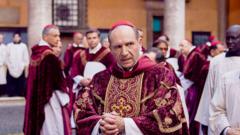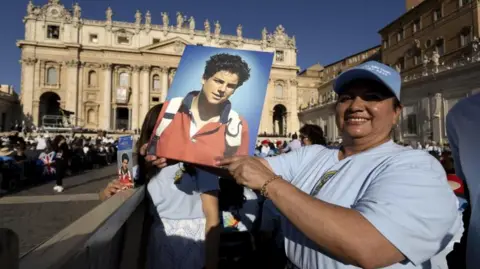The 2024 film "Conclave," featuring Ralph Fiennes as Cardinal Lawrence, has emerged as a box office success and acclaimed Oscar contender. Centered on a papal election in a time of uncertainty, the movie presents an insightful view into the clandestine realm of the Vatican and the complex mechanisms behind electing the leader of the Roman Catholic Church. As depicted in the film, the real-life conclave event is set to commence on May 7, 2024, when 134 cardinals will gather in the iconic Sistine Chapel. Their deliberations are crucial as they seek to select a successor to Pope Francis, with the outcome revealed only by the ascent of white smoke from the chapel's chimney.
Adapted from Robert Harris’s acclaimed novel, "Conclave" portrays the cardinal-electors as they immerse themselves in the Vatican's confines, severing communications with the outside world. According to Stephen Bullivant, a theology professor, while the cardinals are primarily isolated during this process, they're still connected by the need for sustenance, suggesting a unique blend of seclusion and practicality. This isolation stems from a centuries-old tradition aimed at preventing external influences, yet it raises questions about modern expectations for transparency and accountability, as noted by Anna Rowlands, a professor of Catholic social thought. “Being locked away in conclave is an intense responsibility,” she comments, capturing the duality of spiritual duty and human emotion that defines the conclave experience.
Throughout the film, the narrative unfolds with high-stakes dynamics—political maneuvering, allegiances, and strategic voting create a backdrop of tension. Nick Emerson, the film's editor, highlights that behind the façade of divine guidance, extensive “politicking” often shapes the process prior to the official voting sessions. Tina Beattie, a Catholic studies professor, points out that actual decisions and groundwork are not made during the vote itself, but in the days leading up to the conclave as cardinals seek common ground and solidarity.
The movie's portrayal of an unspecified cardinal thrust into the voting process raises an inquiry into the realities of papal elections—only publicly appointed cardinals partake in such conclaves. Yet, with around 80% of eligible cardinals having been appointed by Pope Francis in recent years, the impending election is characterized by unpredictability. This diversity introduces a range of potential influences and priorities that could reshape the future of the Church.
Director Edward Berger strives to humanize the cardinals, aiming to bridge the ancient ritual with contemporary life. By illustrating their vulnerabilities, the film reveals the personal struggles and ambitions that can impact pivotal decisions. Rowlands reflects on the film’s depiction of the conclave as a deeply human process—intertwined with themes of loss, ambition, fear, and resilience amidst its divine undertones. "The conclave... is not merely a spiritual exercise but fundamentally a manifestation of human nature," she concludes, indicating the film's role in illuminating the multifaceted nature of this significant event in the Catholic Church.






















